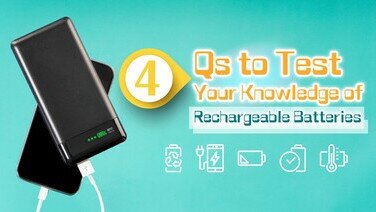Sunscreen products can be divided into physical and chemical types?
According to the types of active ingredients (UV blockers/filters), sunscreen products can generally be divided into 3 types: physical, chemical and mixed (i.e. contain both physical and chemical UV blockers).
Physical sunscreens
Physical sunscreens contain particles that can reflect, scatter and refract skin-damaging UV rays, thus protecting the skin from both UVA and UVB. (For further information on UVA and UVB, please refer to the article “Don’t Let UV Radiation Harm Your Skin!”).
The active UV blockers of physical sunscreens are zinc oxide and titanium dioxide. They are relatively mild in nature and less likely to cause skin allergies. However, physical sunscreens tend to be whiter, and the skin colour may look less natural after application. Due to their viscous texture, it is also more difficult to spread physical sunscreens evenly on the skin.
Chemical sunscreens
Chemical sunscreens work by absorbing UV rays, converting the rays into heat, and releasing the heat from the body in order to reduce their harmful effects on the skin. The main UV blockers in chemical sunscreens include avobenzone, oxybenzone, and octyl methoxycinnamate. Chemical sunscreens usually have a thin texture and give the skin a refreshing feeling after application. However, they are generally more irritating and may cause allergies.
Potential Health Risks of the UV blockers in chemical sunscreens
Consumers should pay particular attention to the following 2 ingredients:
Oxybenzone
This is one of the more common active ingredients, which can absorb both UVA and UVB. However, some studies have found that oxybenzone can penetrate through the skin and reach the bloodstream and may affect human hormones. Therefore, it is not recommended for toddlers or pregnant women.
In addition, some environmental research reports have pointed out that oxybenzone may harm the marine ecosystem after entering the oceans as it may affect coral growth or even cause coral bleaching.
Octyl methoxycinnamate
This ingredient can easily cause skin allergies and is also a potential endocrine disruptor. It has been found in some animal tests to affect reproductive ability and fetal development, thus causing health concerns.
Get to know “SPF”
Isn’t it a common practice to pay attention to the SPF value when selecting a sunscreen product? SPF (or Sun Protection Factor) is an international standard of measuring a product’s effectiveness in blocking UVB and delaying the time of getting sunburn or redness. The higher the SPF value, the longer the skin can be protected under sun exposure.
How to read the SPF value?
Watch the video below:
https://www.youtube.com/watch?v=ofb1yd8NTv4
Assuming that it takes 10 minutes for a person to suffer from sunburn because of exposure to the sun, the time can be extended to 300 minutes (10 X 30 = 300 minutes) if an SPF30 sunscreen product is used. The time can be extended to 500 minutes (10 X 50 = 500 minutes) if an SPF50 sunscreen product is used.
SPF value – higher may not be better
Although the SPF value represents the time that a person can delay getting sunburn, a higher value does not necessarily represent a better effect. This is because the relation between the SPF value and its protection efficacy is not linear.

As can be seen from the above chart, the sun protection efficacy of SPF50 can reach 98% already. A sunscreen with a very high SPF value indicates a higher concentration of active ingredients which may clog pores or increase the risk of skin allergies, thus not producing a desirable result.
SPF 50+
In order not to mislead consumers about the effectiveness of sunscreen products, countries including those in the European Union (EU) and Australia have legislated so that sunscreen products with SPF values higher than 50 can only be labeled as “SPF50+”. This is to prevent consumers from pursuing SPF values blindly which may in turn increase the burden on the skin. At the same time, we need to reapply sunscreen products to the body and face after 2-3 hours of outdoor activities, so there is no need to pursue products with extremely high SPF values.
Products with extremely high protection factors may not be up to standard
As mentioned above, consumers don’t have to pursue products with extremely high SPF values specifically. Let’s take a look at the results from the test conducted by the Consumer Council (or the Council) on sunscreen products on the market. Among the 16 Very High Protection products (marked with SPF values of 50+), only one product can provide sufficient protection as it claimed and was in full compliance with the EU requirements.
In addition, only 4 out of the 14 High Protection products (marked with SPF values ranging from 30 to 50) were in full compliance with the EU requirements. Therefore, the Council reminds consumers once again that there is no need to pursue sunscreen products with extremely high protection factors.
Protection against UVA
As mentioned above, SPF values can reflect the effectiveness of the products in blocking UVB. But on the other hand, many studies have found that UVA can be equally harmful to the skin. In a bid to further contain skin damage caused by UV radiation, countries such as the United States, those in the EU and Australia have required all sunscreen products sold locally to also offer some protection against UVA.
PA System
At present, there is no unified international system for the labelling of UVA protection efficacy. However, many countries in Asia have adopted the PA System designed by Japan, which is a grading system that indicates the level of protection against UVA.
How to read the PA Value?
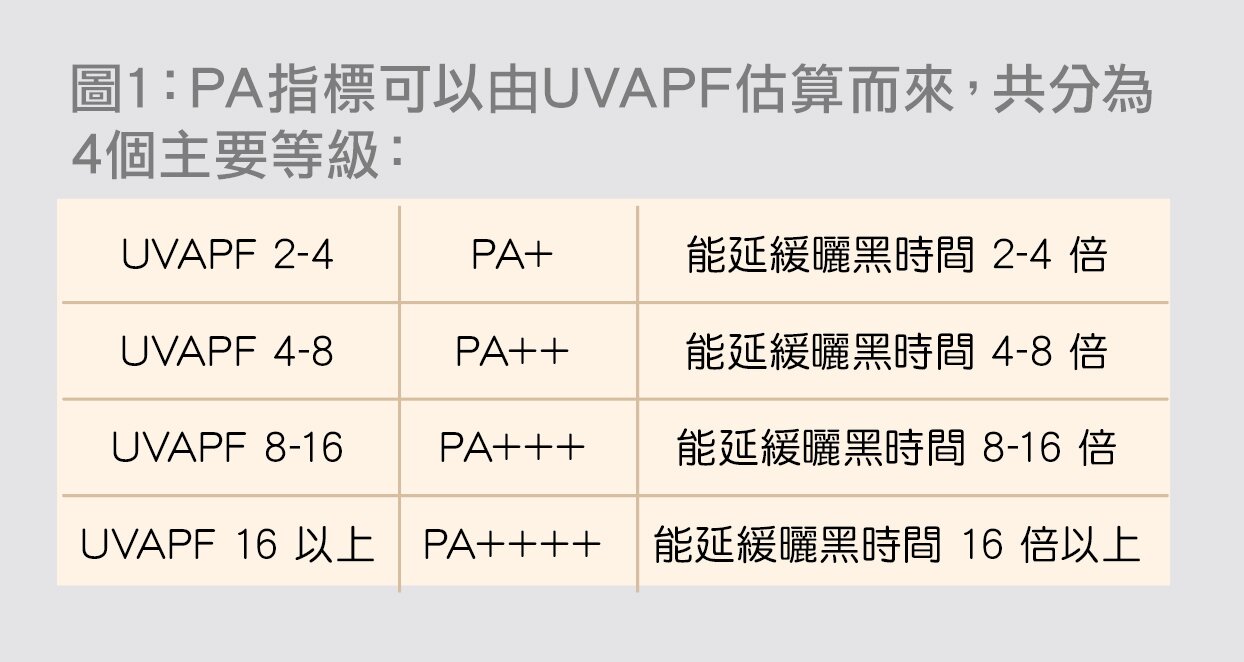
As can be seen from the above table, PA System mainly uses the “+” sign to indicate the product’s efficacy in protecting against UVA. Products with more “+” signs can prolong the time taken to develop a suntan.
UVAPF
Those who are sharp-eyed must have also noticed the UVAPF value in the above table. UVAPF, also known as Ultraviolet A Protection Factor, is the EU's standard for UVA protection efficacy.
Certain European countries and the U.S. often use “Broad Spectrum UVA Protection” or “UVA Protection” labels to indicate the UVA protection efficacy of sunscreen products, which are based on the UVAPF values of the products. If the UVAPF value of a product can reach 1/3 of its SPF value, it can then be labeled as a product with "Broad Spectrum UVA Protection” or “UVA Protection”.
Hong Kong currently does not have any regulation or a unified standard regulating the labelling of SPF and UVA protection efficacies. Since different countries and regions have different labelling requirements, consumers should read the product labels carefully when choosing sunscreen products.
Products’ UVA protection efficacy can vary considerably
According to the Council’s test results, although all samples could provide some protection against UVA, only 7 out of the 23 products using the "PA System" conformed with the equivalent UVAPF values. Furthermore, out of the 7 samples with “Broad Spectrum UVA Protection” or “UVA Protection” labels, only 4 conformed with the requisite standard.
You can see that that most of the products on the market fail to meet the sun protection efficacy as claimed. After applying High Protection and Very High Protection products, consumers may think that they can afford to spend more time on outdoor activities because their skin has sufficient protection. However, this may in turn lead to skin darkening or even sunburn, and also increase the risk of skin cancer.
If you want to know which sunscreen product meets the efficacy claim, please refer to the article, “Over 80% of Sunscreen Performed Below their Labelled Efficacy 6 Models Outperform But Price Can Vary By 23 Times”, CHOICE Magazine, Issue 528 (Chinese Version Only).
8 Q&As on how to use sunscreen products
After choosing a suitable sunscreen product, you must also learn to use it properly in order to fully reap its effect!
1. Should I apply sunscreen in advance?
Different types of sunscreen products may have different usage instructions. For example, some chemical sunscreen products must be applied 20 to 30 minutes before outdoor activities to be fully effective. In addition, many products need to be well shaken before use. Therefore, to ensure proper protection of the skin, consumers should read the usage instructions carefully when using sunscreen products.
2. How much sunscreen do I need to use each time?
To achieve the sun protection efficacy as labelled on the product, you should apply at least 2 mg per cm. In terms of the face area, the amount is roughly equivalent to 1 teaspoon. If you expect staying outdoors for a long time, don't forget to apply sunscreen products to other parts of your body that are exposed to the sun. Don´t forget the scalp, the lips, as well as the back of the ears and that of the hands, which are areas easily overlooked by people but can easily get sunburnt.
In addition, do not try to reduce the application amount for the sake of being thrifty or achieving a lighter feel, thereby greatly reducing the products’ sun protection efficacy!
3. How often should I reapply sunscreen?
If you are staying outdoors for a long time, the sunscreen will be lost gradually due to sweating and other reasons, so it's best to reapply sunscreen every 2 to 3 hours. If you are doing water activities, sunscreen that has no waterproof effect can easily be washed away by water, so you need to reapply sunscreen more frequently. Use a tissue to wipe off the sweat or a blotting sheet to absorb sebum from the face before reapplying a sunscreen.
4. How to reapply sunscreen when I am sweaty?
If there is sweat on the skin, wipe it off with a tissue, or use a blotting sheet to absorb sebum from the face before reapplying a sunscreen.
5. Do I need to apply sunscreen when staying indoors?
Even when you stay indoors, if you are close to a window and can catch some sun, you will also be exposed to UV radiation. So, there is still a need for you to apply sunscreen.
6. Is there an expiry date?
As some sunscreen products have relatively high water content, preservatives will likely lose their effects after the expiry date, which will increase the chance of bacterial / microorganism growth. After opening, the products should not be left for too long. As they have come into contact with the air or human skin, the risk of microorganism growth will also increase. Therefore, consumers should use the products before the expiry date.
7. Can children use sunscreen products for adults?
In fact, the active ingredients contained in children's sunscreen products are similar to those for adults. But the products for children may contain less preservatives such as methylisothiazolinone (MIT) or methylchloroisothiazolinone (CMIT) which may cause allergies. Consider using physical sunscreen products for children who have a history of skin allergies and eczema.
Sunscreen products for children usually come in a spray form. Remember not to spray the product directly onto the face. It is recommended to spray an appropriate amount to the palm and then apply it to the face to avoid the sunscreen from entering the eyes.
8. Do I need to clean thoroughly after using sunscreen products?
Generally speaking, for products that claim to have "waterproof" or "concealing" effects, it is recommended to remove the products afterwards with a makeup remover or facial cleanser. This is because there is a high chance that products with these effects may remain on the skin surface after use. If you don't clean it thoroughly, the residual substances may clog your pores and cause various skin problems.


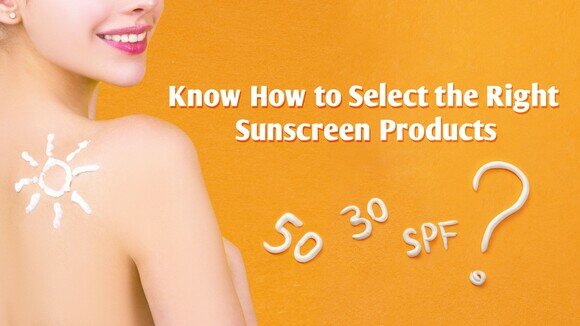
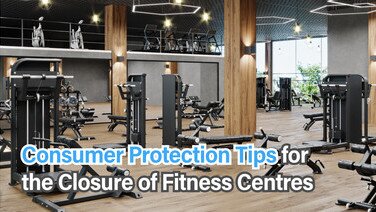


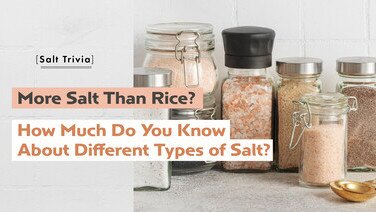

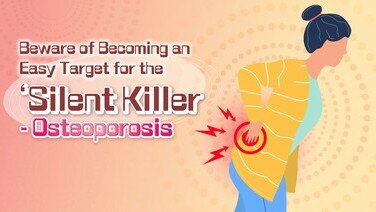
![[Handwashing Cold Knowledge] Debunking 4 common handwashing myths](/f/guide_detail/409326/376c212/43_4%E5%80%8B%E6%B4%97%E6%89%8B%E5%B8%B8%E8%A6%8B%E8%BF%B7%E6%80%9D_Eng.jpg)
